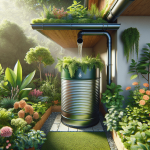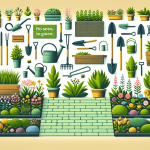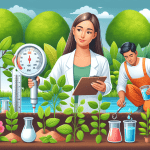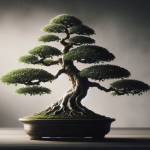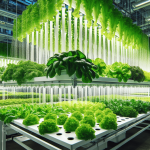This post may contain affiliate links. As an Amazon Associate, we may earn commissions from qualifying purchases.
How can you incorporate hydroponic gardening systems into a small indoor space? You might worry that limited square footage could hold you back from enjoying the benefits of hydroponic gardening, but that’s far from the truth! Hydroponic systems are uniquely well-suited to indoor environments, particularly small spaces. They allow you to grow a variety of plants without the soil, and often in a fraction of the space required for traditional gardening.
What is Hydroponic Gardening?
Hydroponic gardening is a method of growing plants without soil. Instead, plants receive their nutrients through a water-based solution. This method can be incredibly efficient and versatile, making it a perfect solution for small indoor spaces.
Benefits of Hydroponics
You might wonder why you’d want to swap your traditional soil gardening for hydroponics. Here are some compelling reasons:
- Space Efficiency: Hydroponic systems can be designed vertically, allowing you to maximize your available space.
- Faster Growth: Plants grown in hydroponic systems often grow faster than those in soil because they have direct access to nutrients.
- Water Conservation: Hydroponic systems use up to 90% less water than traditional gardening.
- No Soil Pests: Without soil, you’ll have less to worry about in terms of soil-borne pests and diseases.
- Year-Round Gardening: With controlled indoor conditions, you can grow plants all year long.
Types of Hydroponic Systems
There are various hydroponic systems available that can fit into different types of indoor spaces. Each system has its own advantages and disadvantages, and understanding them can help you decide which one is best for you.
Wick System
A Wick System is one of the simplest hydroponic systems. It involves wicks that draw nutrient solution up to the root zone of the plants from a reservoir.
Advantages
- Simple to set up and maintain.
- No need for pumps or electricity.
Disadvantages
- Limited to smaller plants.
- Nutrient delivery can be inconsistent.
Deep Water Culture (DWC)
Deep Water Culture systems involve suspending plant roots in a nutrient-rich water solution. An air pump supplies oxygen to the roots, which is crucial for plant health.
Advantages
- Low maintenance once set up.
- Plants grow quickly due to direct nutrient and oxygen access.
Disadvantages
- Roots can drown if the air pump fails.
- Necessitates water temperature control.
Nutrient Film Technique (NFT)
In the Nutrient Film Technique, a thin stream of nutrient solution is continuously circulated over the roots, which are suspended in sloped channels.
Advantages
- Efficient use of water and nutrients.
- Suitable for various types of plants.
Disadvantages
- Requires precise setup.
- More suitable for leafy greens and herbs.
Ebb and Flow (Flood and Drain)
Ebb and Flow involves periodically flooding a grow tray with nutrient solution and then draining it back into a reservoir.
Advantages
- Versatile: suitable for a wide variety of plants.
- Offers excellent oxygen access to roots.
Disadvantages
- Timers and pumps are necessary.
- Susceptible to pump failures.
Drip System
A Drip System delivers nutrient solution directly to the base of each plant through a network of thin tubes.
Advantages
- High level of control over nutrient delivery.
- Can be scaled for various sizes.
Disadvantages
- More complex to set up.
- Drip emitters can get clogged.
Aeroponics
Aeroponics is a more advanced hydroponic method where plant roots hang in the air and are misted with a nutrient solution.
Advantages
- Roots receive maximum oxygen for rapid growth.
- Highly efficient nutrient use.
Disadvantages
- Requires precise setup and maintenance.
- Vulnerable to misting system failures.
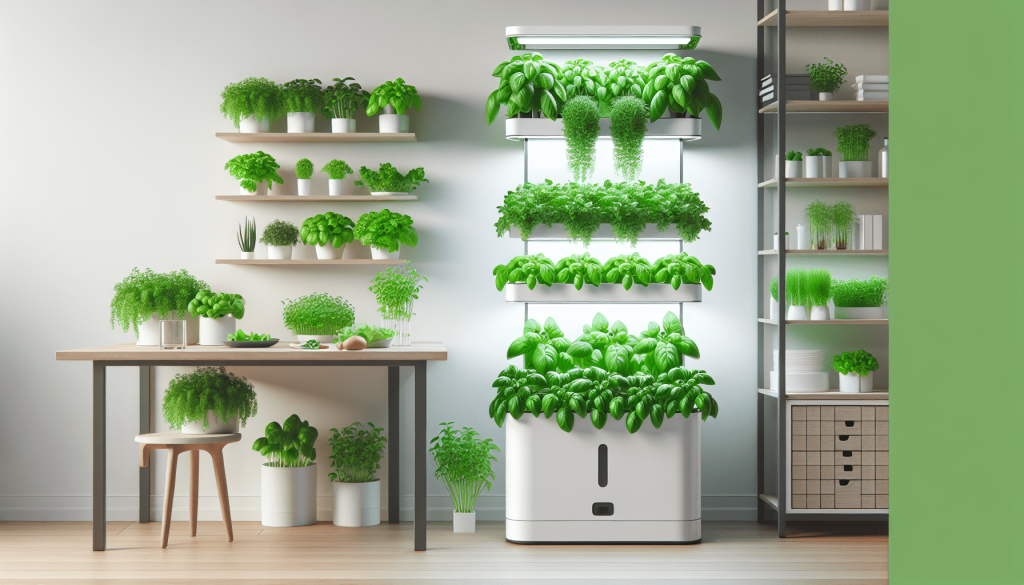
Considerations for Small Spaces
When planning your hydroponic garden for a small indoor area, several factors should be taken into account to ensure success:
Lighting
Plants need adequate light to grow, and in an indoor setup, natural sunlight might be insufficient. You’ll likely need grow lights, such as LED or fluorescent bulbs.
Types of Grow Lights
| Type | Pros | Cons |
|---|---|---|
| LED | Energy-efficient, long-lasting | Higher initial cost |
| Fluorescent | Affordable, good for small setups | Less energy-efficient, shorter life |
Space Utilization
Making the most of limited space is crucial. Consider vertical garden setups like shelves, wall-mounted systems, or tiered setups to maximize your area.
Ventilation
Good air circulation is essential to avoid mold, mildew, and other issues. Consider a small fan to keep the air moving in your hydroponic setup.
Setting Up Your Hydroponic System
Here are steps to help you set up your hydroponic system in a small indoor space:
Decide on a Location
Choose an area with access to electrical outlets and a water supply. Ensure it has or can have proper lighting and ventilation.
Choose your System
Select the type of hydroponic system that suits your plants and space. If you’re a beginner, you might opt for simpler systems like Wick or DWC.
Gather Supplies
Depending on the system you choose, you’ll need:
- Containers or reservoirs
- Tubing
- Pumps (if required)
- Grow medium (rock wool, clay pellets, etc.)
- Nutrient solution
- Grow lights
Assemble the System
Follow the specific assembly instructions for your chosen system. Ensure that all components are securely fastened and functioning correctly.
Plant Your Seeds or Seedlings
Depending on your system, you may start with seeds or young plants. Make sure they are secure and have adequate support as they grow.
Monitor and Maintain
Regularly check the nutrient levels, pH balance, and overall plant health. Maintenance will vary by system but generally involves ensuring consistent nutrient delivery, light, and air supply.
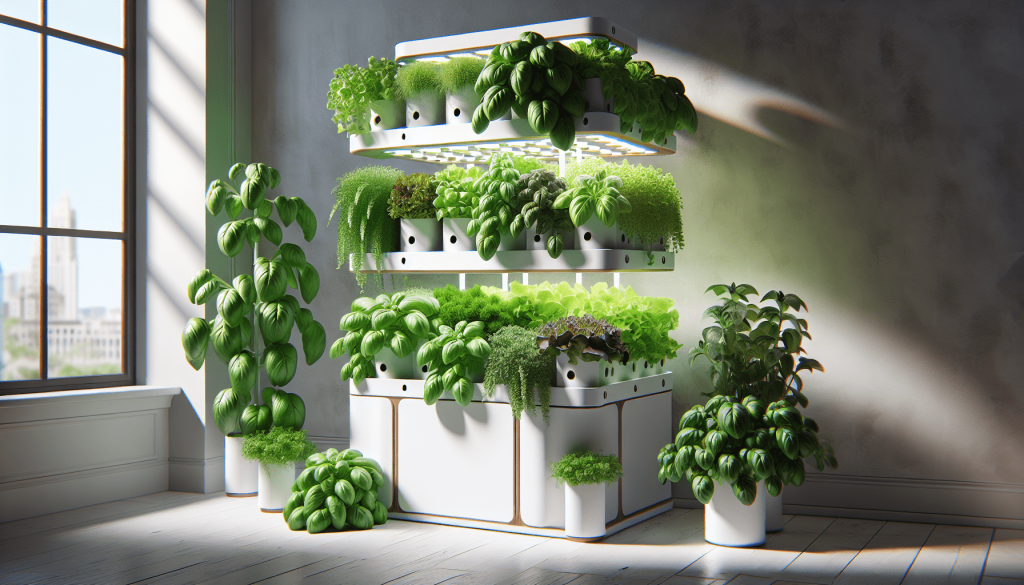
Best Plants for Small-Space Hydroponics
Certain plants are particularly well-suited for hydroponic systems in small spaces. Here are some options to get you started:
Herbs
Herbs are compact and do very well in hydroponic systems. You can easily grow:
- Basil
- Mint
- Thyme
- Parsley
Leafy Greens
Leafy greens are fast growers and great for hydroponic systems:
- Lettuce
- Spinach
- Kale
- Swiss chard
Small Fruits and Vegetables
While more challenging, some fruiting plants can still thrive in indoor hydroponics:
- Cherry tomatoes
- Strawberries
- Peppers
Flowers
Adding some flowers can make your indoor garden even more appealing:
- Orchids
- Pansies
- Petunias
Troubleshooting Common Issues
Every gardener faces challenges, and with hydroponics, these might differ somewhat from traditional gardening. Here are some common issues you might encounter and how to address them:
Nutrient Imbalance
Plants showing discoloration or poor growth might be suffering from nutrient imbalance. Regularly check and adjust the nutrient solution levels according to the needs of your specific plants.
Algae Growth
Algae can be a persistent problem in hydroponic systems. To manage this, ensure your nutrient reservoir is opaque and covered to prevent light from encouraging algae growth. Regular cleaning and monitoring can help keep algae at bay.
Root Rot
Overly wet conditions can lead to root rot. Make sure your system is providing adequate oxygen to the roots and that water is properly drained or cycled.
pH Imbalance
Different plants prefer different pH levels. Regularly checking and adjusting the pH will ensure your plants are in the optimal range. pH testing kits are affordable and easy to use.
Scaling Up and Budgeting
If you become passionate about hydroponics, you might want to scale up your operation. Here’s how:
Modular Systems
Consider investing in modular hydroponic systems that can be expanded over time. These allow you to add more plants as you become more comfortable and experienced.
Budget Considerations
Hydroponic system costs can vary widely, from DIY setups to high-tech systems. Start small to understand the basics, then gradually invest in more sophisticated equipment.
| Initial Costs | Running Costs |
|---|---|
| Purchase of system | Electricity for lights and pumps |
| Grow lights | Nutrient solutions |
| Nutrient solutions | Water bills (though it’s typically less than soil gardening) |
Conclusion
Hydroponic gardening can be an incredibly rewarding way to grow plants, especially in small indoor spaces. From choosing the right system to setting it up and maintaining it, the process provides a new appreciation for plant cultivation. The benefits of faster growth, space efficiency, and year-round gardening are too good to pass up, especially in urban settings where outdoor gardening might not be an option.
Starting with a simple system can pave the way for more elaborate setups, and soon enough, you’ll find yourself with a flourishing indoor garden, producing fresh herbs, greens, and even veggies right in the comfort of your own home. So why not give hydroponics a try? Your small space might just become a green oasis in no time.

